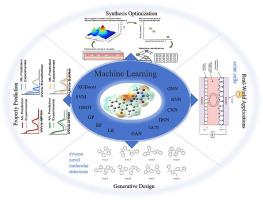Machine learning-assisted study on structure-property relationships of dyes: A review
IF 4.2
3区 工程技术
Q2 CHEMISTRY, APPLIED
引用次数: 0
Abstract
The structure, properties, and synthesis processes of dye molecules are governed by complex, multi-dimensional relationships. Traditional research methods face limitations: they struggle to process high-dimensional data, involve high experimental costs, and hit efficiency bottlenecks, making it hard to derive results quickly or conduct comprehensive analysis. Machine learning (ML) has emerged as a powerful solution, enabling computational models to learn structure-property relationships (SPRs) from existing data, (e.g., how molecular structure governs color, stability, or reactivity), and predict dye behavior using these patterns. This paper reviews cutting-edge ML applications in dye research, including SPR modeling for property prediction, data-driven design of novel dye molecules, and optimization of synthesis processes for improved yield or reduced reaction time. However, key challenges remain, such as inconsistent experimental data formats that hinder model training and the inherent “black-box” nature of many ML models, which limits interpretability and trust in predictions. Future progress will likely stem from integrating multimodal data (experimental, computational, and theoretical) to enhance model robustness and combining ML with fundamental chemical principles to improve reliability and interpretability. These advances promise to transform dye research from traditional trial-and-error approaches into a closed-loop, data-driven workflow where models iteratively guide experiments, accelerating discovery and optimization.

染料结构-性能关系的机器学习辅助研究综述
染料分子的结构、性质和合成过程是由复杂的多维关系决定的。传统的研究方法面临着局限性:难以处理高维数据,实验成本高,遇到效率瓶颈,难以快速得出结果或进行全面分析。机器学习(ML)已经成为一种强大的解决方案,使计算模型能够从现有数据中学习结构-性质关系(SPRs),(例如,分子结构如何控制颜色,稳定性或反应性),并使用这些模式预测染料的行为。本文综述了机器学习在染料研究中的前沿应用,包括用于性能预测的SPR建模,新染料分子的数据驱动设计,以及提高收率或缩短反应时间的合成工艺优化。然而,关键的挑战仍然存在,例如不一致的实验数据格式阻碍了模型训练,以及许多ML模型固有的“黑箱”性质,这限制了预测的可解释性和信任度。未来的进展可能源于整合多模态数据(实验、计算和理论)以增强模型鲁棒性,并将ML与基本化学原理相结合以提高可靠性和可解释性。这些进步有望将染料研究从传统的试错方法转变为闭环,数据驱动的工作流程,其中模型迭代指导实验,加速发现和优化。
本文章由计算机程序翻译,如有差异,请以英文原文为准。
求助全文
约1分钟内获得全文
求助全文
来源期刊

Dyes and Pigments
工程技术-材料科学:纺织
CiteScore
8.20
自引率
13.30%
发文量
933
审稿时长
33 days
期刊介绍:
Dyes and Pigments covers the scientific and technical aspects of the chemistry and physics of dyes, pigments and their intermediates. Emphasis is placed on the properties of the colouring matters themselves rather than on their applications or the system in which they may be applied.
Thus the journal accepts research and review papers on the synthesis of dyes, pigments and intermediates, their physical or chemical properties, e.g. spectroscopic, surface, solution or solid state characteristics, the physical aspects of their preparation, e.g. precipitation, nucleation and growth, crystal formation, liquid crystalline characteristics, their photochemical, ecological or biological properties and the relationship between colour and chemical constitution. However, papers are considered which deal with the more fundamental aspects of colourant application and of the interactions of colourants with substrates or media.
The journal will interest a wide variety of workers in a range of disciplines whose work involves dyes, pigments and their intermediates, and provides a platform for investigators with common interests but diverse fields of activity such as cosmetics, reprographics, dye and pigment synthesis, medical research, polymers, etc.
 求助内容:
求助内容: 应助结果提醒方式:
应助结果提醒方式:


